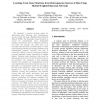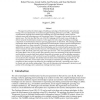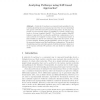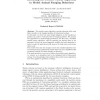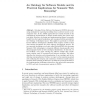252 search results - page 29 / 51 » Using OWL to model biological knowledge |
CSB
2005
IEEE
14 years 1 months ago
2005
IEEE
We developed a machine learning system for determining gene functions from heterogeneous sources of data sets using a Weighted Naive Bayesian Network (WNB). The knowledge of gene ...
TITB
2002
13 years 7 months ago
2002
This paper describes the initial stages of building an ontology of bioinformatics and molecular biology. The conceptualisation is encoded using the Ontology Inference Layer (OIL),...
AB
2007
Springer
14 years 1 months ago
2007
Springer
Abstract. A network of reactions is a commonly used paradigm for representing knowledge about a biological process. How does one understand such generic networks and answer queries...
ANTSW
2006
Springer
13 years 11 months ago
2006
Springer
The particle swarm algorithm contains elements which map fairly strongly to the foraging problem in behavioural ecology. In this paper, we show how some simple adaptions to the sta...
ESWS
2008
Springer
13 years 9 months ago
2008
Springer
Ontology-Driven Software Development (ODSD) advocates using ontologies for capturing knowledge about a software system at development time. So far, ODSD approaches have mainly focu...
